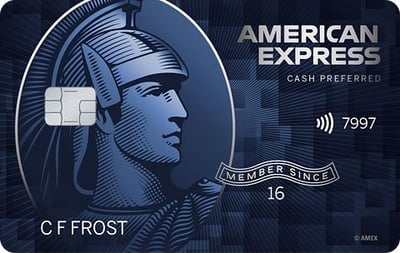5 Things to Know About the Fisher-Price Credit Card
It earns an excellent 2% back on every purchase, but only if you redeem your rewards into an eligible 529 plan.

Many or all of the products on this page are from partners who compensate us when you click to or take an action on their website, but this does not influence our evaluations or ratings. Our opinions are our own.
If you want a no-fuss way to invest a little extra money for your child’s education, the $0-annual-fee Fisher-Price College Savings Mastercard is a compelling option. It earns 2% back on every purchase, as long as you deposit your rewards into an eligible 529 plan (a type of investment that can help you save for qualified education expenses). Sure, credit card rewards alone probably won’t be enough to send your child to college without student loans. But these days, every bit of pocket change can help.
Issued by MRV Banks, the Fisher-Price credit card gives you a convenient way to save for qualified education expenses. But in exchange for that convenience, you will lose a little flexibility in terms of reward redemption. So if you have other money goals in mind or just want to redeem your rewards for cash upfront, you’d be better off choosing a different credit card.
Here are five things to know about the Fisher-Price College Savings Mastercard.
1. You can earn up to 2% back on all purchases
The Fisher-Price credit card earns 2% back on all purchases — if you redeem rewards the preferred way (but more on that later). That’s a strong rate, especially if you don’t want to worry about juggling multiple cards with different reward tiers.
But if you’re willing to put in some extra effort, a credit card with bonus categories could be more lucrative. If you cook a lot of meals at home, for instance, you could fare well with the Blue Cash Preferred® Card from American Express, which among other rewards earns 6% cash back at U.S. supermarkets, on up to $6,000 in spending per year.* (After that, it earns 1% back at U.S. supermarkets.) But this card does come at a cost: a $0 intro annual fee for the first year, then $95. Terms apply. Also, since your cash back is generally distributed as a statement credit, you can't turn around and invest it in a 529.
Alternatively, if you prefer dining out to eating in, the $0-annual-fee Capital One Savor Cash Rewards Credit Card earns 3% back at restaurants, and you're not locked in to redeeming as a statement credit, giving you a little more flexibility with your earnings.
2. But it only earns 2% back if you redeem rewards into a 529 plan
You’ll earn 2% back on all purchases with the Fisher-Price College Savings Mastercard, but only if you redeem rewards into an eligible 529 plan. If you redeem rewards in any other way, you’ll earn only 1% back.
Other cards earn 2% back without such restrictions. The $0-annual-fee Wells Fargo Active Cash® Card, for instance, offers 2% back on everything, no matter how you redeem your rewards.
Whether you're redeeming Fisher-Price credit card rewards as a statement credit or into a 529 plan, the minimum redemption amount is $25.
3. You can earn a small sign-up bonus
As of this writing: After spending $250 on the Fisher-Price card in the first 3 months, you’ll earn a $50 bonus (worth $25 if you don’t deposit the rewards into a 529 plan). Earning a sign-up bonus is a perk that you won’t find on many cards that earn 2% back on all purchases, but it’s not unheard of. Plus, as far as sign-up bonuses go, $50 is on the low side.
The aforementioned Wells Fargo Active Cash® Card, for example, has this welcome offer: Earn a $200 cash rewards bonus after spending $500 in purchases in the first 3 months.
4. You'll need to go through a multi-step approval process
Potential applicants can’t access the application directly. Instead, you need to input your mobile phone number and the last four digits of your Social Security number (SSN). Once you do that and enter the code sent to your phone, you’ll be taken to a preapproval page where you’ll need to provide additional information, including your full SSN.
This step won’t impact your credit, but it will give you a better sense of your approval odds before you actually apply. It’s important to note, though, that getting preapproved doesn't mean you’re automatically approved for the card. Once you complete the preapproval process, you have the option to apply for the Fisher-Price College Savings Mastercard, which you can do whether you were preapproved or not. If you didn’t receive a preapproval offer, it might be worth applying anyway. Your credit will only be impacted if you are approved.
5. The card makes a good travel companion
If you’re planning an international trip, the Fisher-Price credit card is a solid addition to your wallet. For starters, it’s a Mastercard, which is widely accepted outside of the U.S. Plus, it doesn’t charge foreign transaction fees, which typically cost around 3% of each purchase you make with a foreign vendor. While most travel credit cards don’t charge these fees, some cash-back cards do.
Find the right credit card for you.
Whether you want to pay less interest or earn more rewards, the right card's out there. Just answer a few questions and we'll narrow the search for you.




